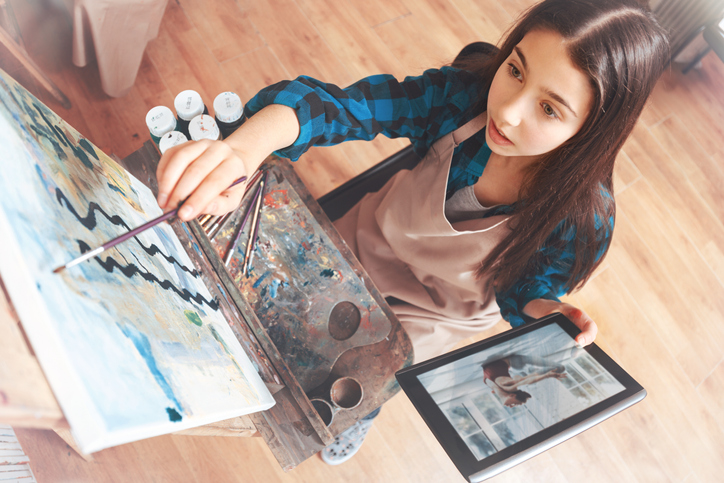Incorporating the “Art” in STEAM

One way I expose students to engineering is by having them take apart, analyze, and reassemble unwanted electronics donated by our community. Students love to deconstruct these electronics and see how they work, but they have trouble when they try to reassemble them. My classroom filled with garbage cans overflowing with these incomplete project parts. I was losing a lot of space in my classroom and I wasn’t happy with the amount of waste we were generating. I had to find a better way.
To put a dent in the waste, I created the “Parts to Arts” project. After taking something apart, if students couldn’t put it back together, they were challenged to upcycle the parts into pieces of art. Like the deconstruction process, my kids loved the “Parts to Arts” initiative. They were producing tons of art, but the “Parts to Project” didn’t actually solve the problem. Instead of leftover parts in overflowing trash cans, we now had a bunch of upcycled art projects. How could we take “Parts to Arts” to another level?
I presented my students: with a design challenge: what can we do with all this wonderful artwork? After some brainstorming and collaboration it was unanimous: sell it.
Students began planning for their new business. They decided that having a physical storefront wasn’t practical. We’d have to sell our upcycled art online. I used Wordpress, to build them an online marketplace. I set the store up to work like Amazon. Every student team got a login to the Wordpress site. Once logged in, students could create their own product page. Once approved, I linked their product page to our virtual store. When customers visited our online store, FHGizmos.com, they would be able to see all of the products that students had for sale.
What happened next was like nothing I’ve ever experienced in teaching: my kids dove in. Students not only put their “Parts to Arts” projects up for sale, but they started to offer all kinds of different digital arts products in their store. Students were selling products like 3D designs, custom YouTube Artwork, Minecraft skins, apps, games, and more! One team even sold custom theme songs. To support their new products, students created advertisements, commercials, and podcasts used to entice potential customers to “buy now.”
By challenging students to solve problems and then supporting them through the creation process, I was able to add the “Art” in STEAM in a way that gave students not just ownership of their projects, but valuable entrepreneurial skills they can use in just about any career choice.
Chris Aviles is a teacher at Knollwood middle school in the Fair Haven school district in Fair Haven, New Jersey. There he runs the Fair Haven Innovates program he created in 2015. Read more with Chris’s work on his blog TechedUpTeacher.com.
Tech & Learning Newsletter
Tools and ideas to transform education. Sign up below.
ADDITIONAL RESOURCES FROM TECHLEARNING.COM
Project Based Learning Done Right: 10 Misconceptions Plus 10 Resources to Raise the PBL Bar
Control Robots, Drones and More With Impressive Coding App
Moving from Dioramas to Dynamic Projects
From Consumers to Producers: Helping Kids Make Screen Time Meaningful
